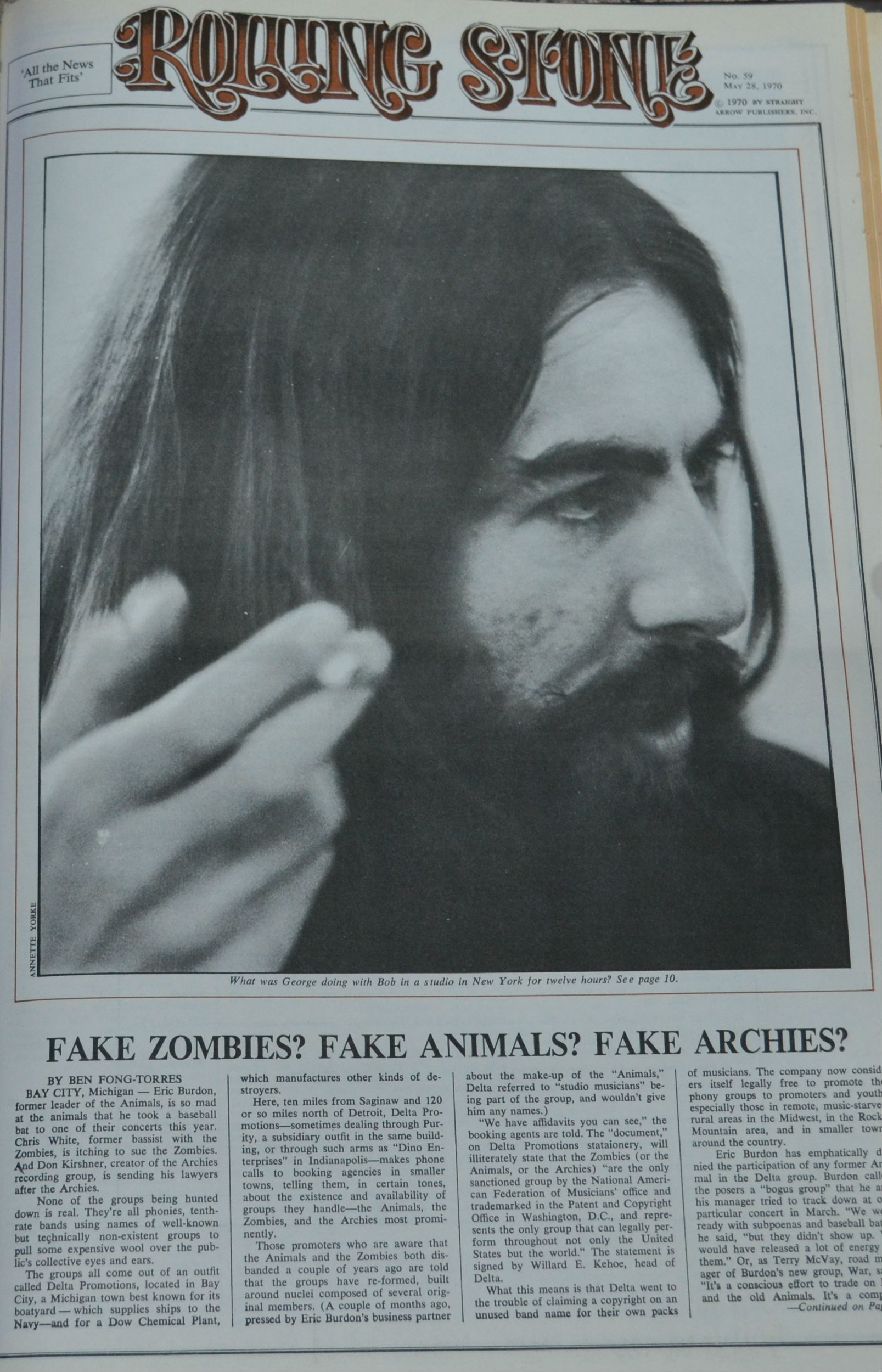This is the fascinating story of the rock and roll music scandal that put Bay City on the front page of Rolling Stone magazine on May 28, 1970.

By Daniel Ralston with Gary J.
Johnson
Chris White shakes his head and laughs when I show
him the first photo. At 73, the bassist and songwriter for the reunited British psych-rock band the Zombies looks like a cool
grandpa in black pants, blue dress shirt, and polar fleece vest — a sharp contrast from his septuagenarian bandmates
who still sport leather jackets and tight pants. He adjusts his glasses and studies the image of the impostors, four flamboyantly
dressed young men taken in 1969. We are backstage at the Saban Theatre in Beverly Hills last October and after this brief
intermission, White will join the rest of the band onstage to play the band’s cult classic 1967 album Odessey and Oracle in its entirety.
I pull up another grainy photo from 1969 on my laptop: a traditional black and white press photo for
the Original “Zombies” (in conspicuous scare quotes), autographed. There are only four guys pictured despite the
fact that the Zombies were a five-piece. I inform White that the two young men wearing cowboy hats are Dusty Hill and Frank
Beard from the legendary Texas blues-rock band ZZ Top, although the names D. Cruz and Chris Page are scrawled over them. The
real Zombies would have never worn cowboy hats.
 The Zombies quietly disbanded when Odessey and Oracle failed to make the charts. Nobody even saw fit to correct the unintentionally
misspelled “Odessey” on the record’s cover, viewed in hindsight as typical psychedelic-era wordplay. Almost
two years after their breakup, after little fanfare and two failed singles, the band’s U.S. label, Date Records, decided
to release the track “Time of the Season” as a last-ditch effort; the song went to No. 1 in Cashbox and No. 3 on the Billboard
chart and the Zombies were suddenly in demand.
The Zombies quietly disbanded when Odessey and Oracle failed to make the charts. Nobody even saw fit to correct the unintentionally
misspelled “Odessey” on the record’s cover, viewed in hindsight as typical psychedelic-era wordplay. Almost
two years after their breakup, after little fanfare and two failed singles, the band’s U.S. label, Date Records, decided
to release the track “Time of the Season” as a last-ditch effort; the song went to No. 1 in Cashbox and No. 3 on the Billboard
chart and the Zombies were suddenly in demand.
The
Zombies, unaware of their stateside success — this was possible in 1969 — had already moved on to new musical
projects or day jobs. This vacuum meant anyone could tour the United States pretending to be the Zombies, even a four-piece
blues band from Dallas. As the Beatles and Stones went from garage and blues rock beginnings to more adventurous music, the
Zombies took their early, more raucous hits (“She’s Not There,” “Tell Her No”) and refined them.
But replicating a refined sound was hardly the priority.
There were in fact two different bands touring the United States in 1969 calling
themselves the Zombies. Both impostor groups were managed by the same Bay City company, Delta Promotions, the owners of which
insisted they’d legally acquired the songs of the Zombies and other bands. It was an operation that would be impossible
to attempt today, perpetrated in an era when fans didn’t have unlimited access to artists’ whereabouts, or, in
some cases, even know what they looked like.
Read the rest of the story and find out how future members of ZZ Top along with a popular band from
the Upper Peninsula became involved in the scheme: https://michiganrockandrolllegends.com/index.php/blog/312-zz-top-and-bay-city-s-fake-zombies-scandal






